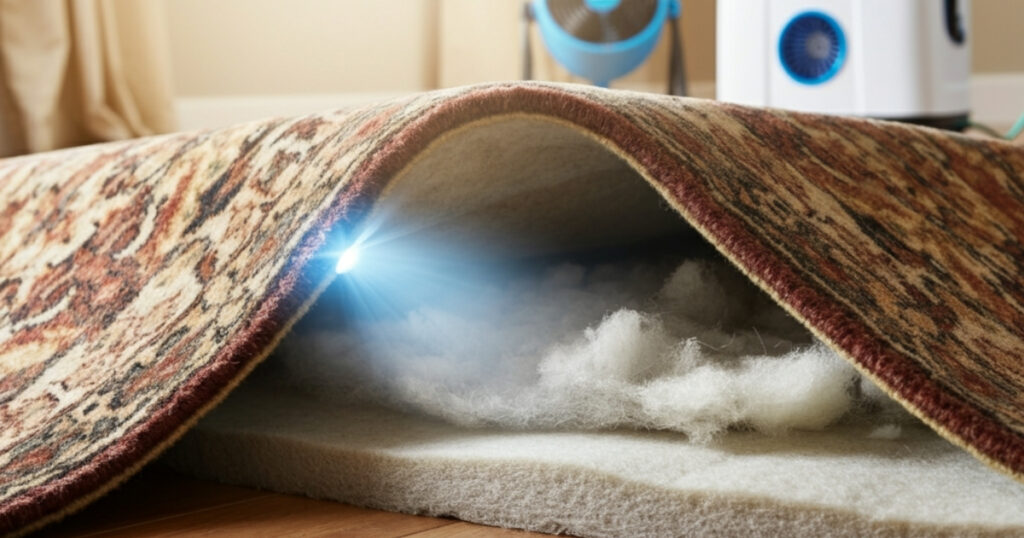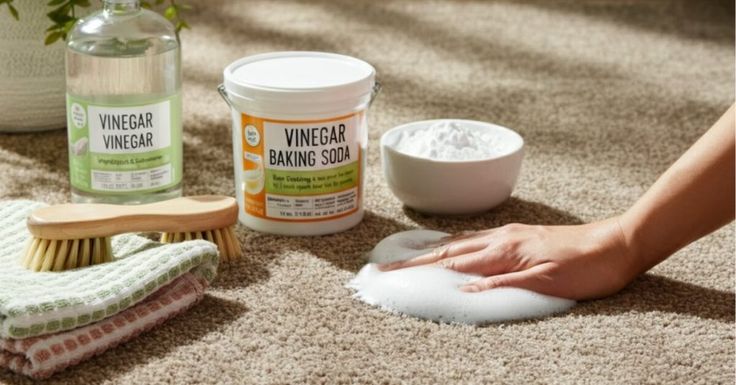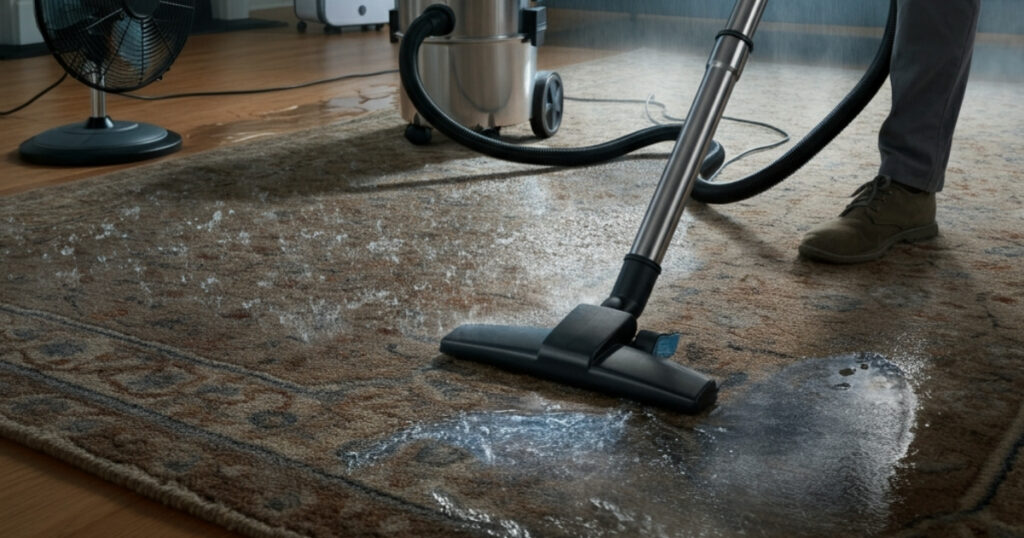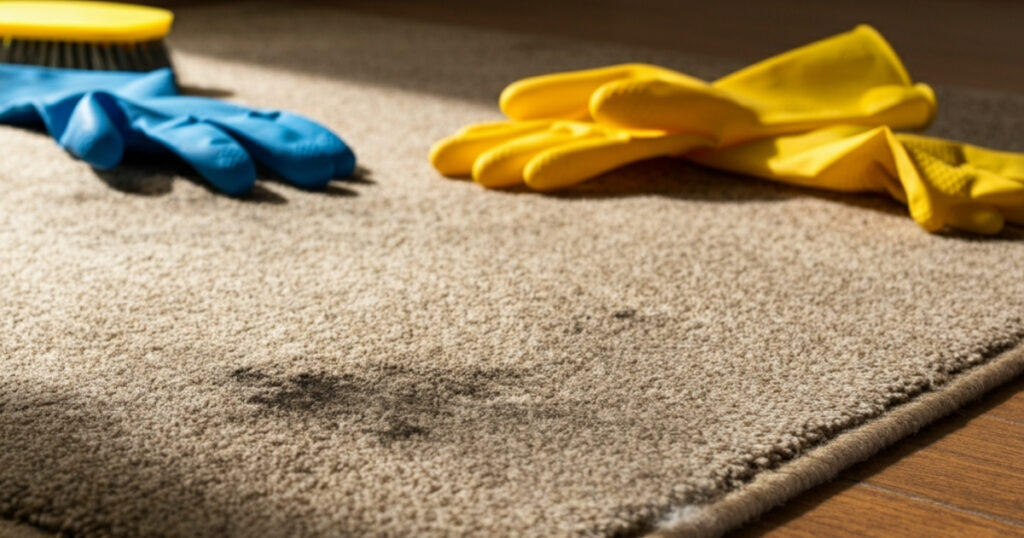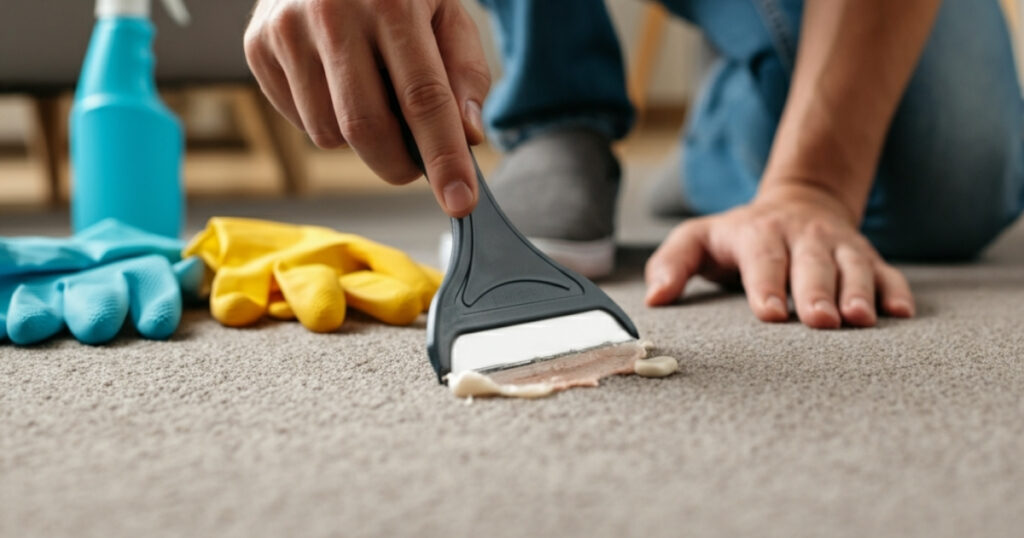As an Amazon Associate, I earn from qualifying purchases.
Water damage can turn your comfortable home into a stressful situation, especially when it affects your carpet padding. Understanding how carpet padding dries out is crucial for preventing mold growth, structural damage, and costly replacements. Whether you’re dealing with a burst pipe, flooding, or a simple spill that went unnoticed, knowing the drying process helps you make informed decisions about restoration or replacement.
Carpet padding typically takes 24 to 72 hours to dry completely under optimal conditions. However, several factors influence this timeline, including the type of padding material, moisture levels, air circulation, temperature, and humidity. The drying process involves removing surface moisture first, followed by deep moisture extraction from the padding core. During this time, proper ventilation and dehumidification are essential to prevent secondary damage like mold growth.
This comprehensive guide walks you through everything you need to know about carpet padding moisture recovery, from initial assessment to complete restoration.
Contents Overview
Understanding Carpet Padding Materials and Their Drying Properties
Different types of carpet padding respond differently to moisture exposure. Foam padding, made from polyurethane, tends to absorb water quickly but also releases it relatively fast with proper drying techniques. Rubber padding creates a moisture barrier that can trap water underneath, making it more challenging to dry thoroughly.
Fiber padding, often made from recycled materials, absorbs significant amounts of water and requires extended drying periods. This type of padding often needs replacement after water damage because it’s difficult to dry completely. Meanwhile, synthetic padding materials generally dry faster than natural fiber options.
The thickness of your carpet padding also affects drying time. Thicker padding holds more moisture and takes longer to dry out completely. Additionally, the age of the padding matters since older materials may have compromised structure that retains moisture more readily.
Factors That Affect How Carpet Padding Will Dry Out
Temperature plays a significant role in moisture evaporation. Higher temperatures accelerate the drying process, while cooler conditions slow it down. The ideal temperature range for drying carpet padding falls between 70 to 80 degrees Fahrenheit.
Humidity levels directly impact drying efficiency. High humidity environments slow evaporation, while low humidity conditions speed up the process. Professional restoration services often use dehumidifiers to create optimal drying conditions.
Air circulation is critical for effective moisture removal. Stagnant air prevents proper evaporation, while good airflow helps carry moisture away from the padding surface. Fans, air movers, and HVAC systems all contribute to better circulation.
The initial moisture level determines how long the drying process takes. Light moisture from small spills dries much faster than heavy saturation from flooding. Additionally, the type of water involved matters since clean water dries more easily than contaminated water that may require special treatment.
Signs Your Carpet Padding Is Drying Properly
Visual inspection reveals important clues about the drying progress. The carpet surface should feel increasingly dry to the touch over time. Properly drying padding shows reduced moisture when you press down on the carpet with clean towels or paper.
Temperature changes indicate moisture movement. As moisture evaporates, the carpet surface temperature may feel cooler initially, then gradually warm up as drying progresses. This cooling effect happens because evaporation draws heat from the surrounding materials.
Sound changes also signal drying progress. Wet padding often produces a squishy or squishing sound when walked on. As moisture decreases, these sounds diminish and eventually disappear completely.
Professional moisture meters provide the most accurate assessment of drying progress. These tools measure moisture content in both carpet and padding, giving you precise data about whether the materials are reaching acceptable dryness levels.
The Complete Drying Timeline: What to Expect
The first 24 hours are crucial for surface moisture removal. During this period, most visible water disappears from the carpet surface. However, the padding underneath still contains significant moisture that requires additional time to evaporate.
Between 24 to 48 hours, deep moisture begins moving upward through the carpet fibers. This is when proper air circulation becomes most important. Without adequate ventilation, moisture can remain trapped in the padding core.
The 48 to 72-hour mark typically represents the final drying phase for most padding types. By this time, moisture levels should reach acceptable standards that prevent mold growth and structural damage.
Some situations require extended drying periods beyond 72 hours. Dense padding materials, high humidity conditions, or extensive water damage may need additional time. Professional assessment helps determine when padding is truly dry and safe.
Professional vs. DIY Drying Methods
Professional water restoration services use specialized equipment that significantly improves drying efficiency. Commercial-grade air movers, dehumidifiers, and moisture extraction tools can reduce drying time and improve results.
DIY methods work well for minor moisture issues but have limitations. Home fans, dehumidifiers, and heating systems can help with light moisture problems. However, extensive water damage often exceeds DIY capabilities and requires professional intervention.
Cost considerations play a role in choosing between professional and DIY approaches. While professional services cost more upfront, they may prevent expensive mold remediation or carpet replacement later. DIY methods save money initially but may not achieve complete drying in severe cases.
Time constraints also influence the decision. Professional services work faster and more efficiently, which is crucial when preventing mold growth. DIY methods take longer and require more personal time and effort.
When Carpet Padding Won’t Dry Out Completely
Certain conditions prevent carpet padding from drying properly. Contaminated water from sewage or flooding may require padding replacement regardless of drying efforts. Additionally, padding that remains wet for more than 48 hours faces increased mold risk.
Structural issues can impede drying progress. Poor ventilation, high humidity, or inadequate heating makes complete drying difficult or impossible. In these cases, addressing the underlying environmental conditions becomes necessary.
Material limitations also affect drying success. Some padding types, particularly natural fiber varieties, may never dry completely after heavy saturation. These materials often require replacement to prevent ongoing moisture problems.
Recognition of these limitations helps you make practical decisions about restoration versus replacement. Sometimes replacement becomes the most cost-effective and safe option.
Preventing Future Moisture Issues
Regular maintenance helps prevent carpet padding moisture problems. Address plumbing leaks promptly, maintain proper humidity levels, and ensure good ventilation throughout your home.
Water detection systems provide early warning for potential moisture issues. These devices alert you to leaks before they cause extensive damage to carpet and padding.
Quality padding materials resist moisture better than cheaper alternatives. Investing in higher-grade padding during installation or replacement provides better protection against future water issues.
Proper installation techniques also contribute to moisture resistance. Professional installation ensures padding fits correctly without gaps or compression that could trap moisture.
Health and Safety Considerations During the Drying Process
Mold growth becomes a serious concern when carpet padding remains wet for extended periods. Mold can begin developing within 24 to 48 hours in favorable conditions. This creates health risks for occupants, particularly those with allergies or respiratory sensitivities.
Air quality monitoring helps ensure safe conditions during the drying process. Musty odors, visible mold growth, or respiratory irritation indicate potential problems that require professional attention.
Contaminated water presents additional health risks. Sewage, flood water, or other contaminated sources may introduce harmful bacteria or chemicals. These situations often require professional remediation and padding replacement.
Personal protective equipment becomes necessary when dealing with potentially contaminated materials. Gloves, masks, and protective clothing help prevent exposure to harmful substances during cleanup and assessment.
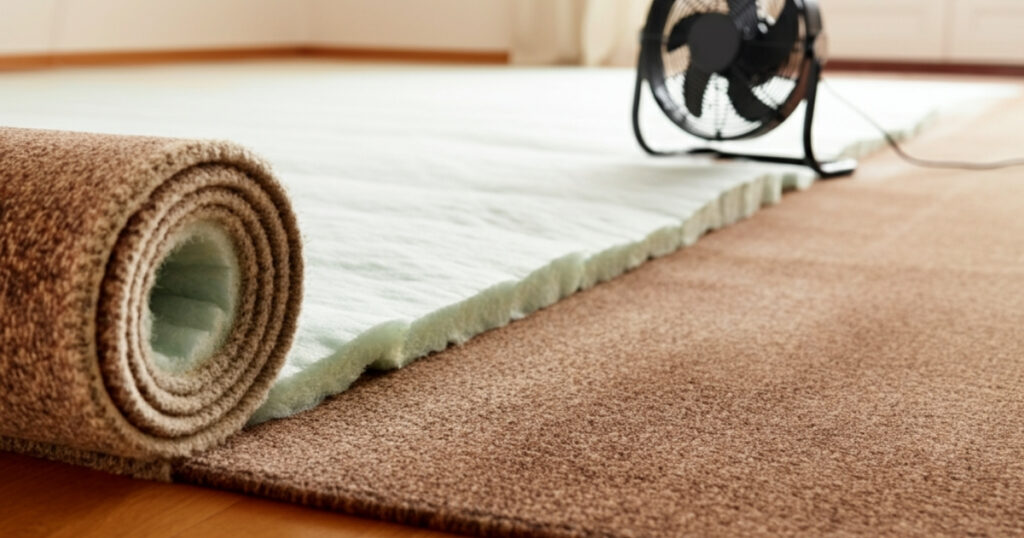
Frequently Asked Questions
1. Will carpet padding dry out on its own without intervention?
Yes, carpet padding can dry naturally with time and proper conditions, but it may take much longer and face higher mold risks compared to active drying methods.
2. How can I tell if my carpet padding is completely dry?
Use a moisture meter for accurate measurement, or press clean towels firmly into the carpet to check for moisture transfer.
3. Can I speed up the carpet padding drying process?
Yes, increase temperature, improve air circulation with fans, reduce humidity with dehumidifiers, and ensure proper ventilation.
4. Should I replace carpet padding if it takes too long to dry?
Yes, if padding remains wet beyond 48-72 hours or shows signs of mold growth, replacement is usually the safest option.
5. Will wet carpet padding always develop mold?
No, but the risk increases significantly after 24-48 hours of moisture exposure, especially in warm, humid conditions.
6. Can I walk on carpet while the padding is drying?
Light foot traffic is generally acceptable, but avoid heavy use that could slow drying or push moisture deeper into materials.
7. Does the type of water affect how carpet padding dries?
Yes, clean water dries more easily than contaminated water, which may require special treatment or padding replacement.
8. How much does professional carpet padding drying cost?
Professional drying services typically range from $200-800 depending on the affected area size and severity of water damage.
Making the Right Decision for Your Carpet Padding Recovery
Understanding how carpet padding dries out empowers you to make informed decisions about water damage recovery. The key factors include time, environmental conditions, padding material, and the extent of moisture exposure. Most padding can dry successfully within 72 hours under optimal conditions, but some situations require professional intervention or complete replacement.
Remember that prompt action significantly improves your chances of successful drying and prevents costly secondary damage. Monitor the drying progress carefully, maintain proper environmental conditions, and don’t hesitate to consult professionals when dealing with extensive water damage or contaminated water sources.
The investment in proper drying techniques or professional services often saves money compared to full carpet and padding replacement. More importantly, it protects your family’s health by preventing mold growth and maintaining good indoor air quality.
As an Amazon Associate, I earn from qualifying purchases.

